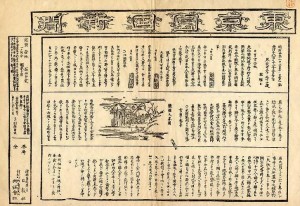I enjoyed the history of the Albany Evening Journal, solely because of its transformation from a party newspaper to a proponent for the Civil War.
Thurlow Weed started the production of the “Albany Evening Journal” in New York as a medium to promote the Anti-Masonic Party, the first single-issue “third” party in the United States, back in 1830. Weed made the “Evening Journal” the leading and most highly circulated political newspaper in the U.S. during the 1840s. The Evening Journal became an organ for the Whig Party and after 1856 a Republican newspaper.
Over the years, the newspaper began reporting and responding to events that involved the issue of slavery. In 1857, the “Evening Journal” published articles and editorials about the Supreme Court decision in the Dred Scott case. The newspaper wrote in one editorial, “All who love Republican institutions and who hate Aristocracy, compact yourselves for the struggle that threatens your liberty…”
The editorial on the raid of Harper’s Ferry on Oct. 9, 1859 described the attempt at a slave revolt by John Brown and his men an act of treason against the U.S., but also went on to say that “those whose sense of justice was blunted by deep passion could fail to see that they were committing a crime…”
Shortly before the raid of Fort Sumter, the “Evening Journal” published a feature story on April 11, 1861 about the conspiracy of the assassination of President Abraham Lincoln. An entire story on how conspirators, who supported the secessionists and depended on day labor, were caught attempting to kill the President elect at the time. The last big story on the slavery issue before the Civil War broke out four days later.
In my opinion this was the defining moment of the “Albany Evening Journal”, since the party journal became testimony of the Free states for the abolition of slavery during its greatest era.











